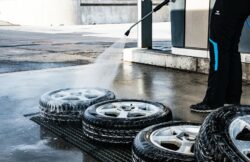Product Recall Lawsuits Rocking the Market
How safe are the products we use daily? From Shimano's bike cranksets to Pinkfong's Baby Shark bath toys, a rising tide of product recall lawsuits is challenging our assumptions. This article will delve into these cases, scrutinizing the alleged safety and design defects that have led to such legal actions. We will examine the potential dangers consumers face and the urgent need for stringent quality control in product design and manufacturing, as companies are held accountable for their oversights.

Shimano Crankset Recall Overview
The Shimano Hollowtech Crankset recall, initiated in September, has sparked a proposed class action lawsuit due to allegations of design defects that put cyclists at significant risk of injury. This incident underscores the risks in the cycling industry and highlights the importance of product safety. Shimano, a renowned cycling equipment manufacturer, is now under scrutiny for alleged negligence in ensuring the safety of their product. The Hollowtech Crankset, used broadly by cyclists worldwide, is said to possess design defects that could potentially lead to severe accidents. The lawsuit primarily aims at holding Shimano accountable for the reported design flaw and the potential harm it could inflict on consumers, bringing the critical issue of product safety to the forefront.
Risks Associated With Shimano Crankset
Numerous cyclists have faced significant danger due to the alleged design defects in the Shimano Hollowtech Crankset, raising serious questions about product safety standards in the cycling industry. The liability concerns related to these defects highlight the potential financial implications for Shimano, as well as the potential harm to their reputation.
From a consumer safety perspective, these risks include:
- The possibility of the crankset breaking during use, potentially causing serious injury to the cyclist.
- The potential for the crankset to fail without warning, increasing the risk of accidents.
- The potential for Shimano to face legal action if it is proven that they were aware of the defects but failed to adequately address them.
These risks underscore the importance of rigorous product testing and recall procedures.
Aerosol Duster Inhalant Lawsuit
In light of these challenges faced by Shimano, we now turn our attention to another notable product liability case - the class action lawsuit against makers of aerosol computer dusters. This case has ignited controversy, as it is alleged that these companies have sparked and prolonged a public health crisis of inhalant abuse. Despite consumer warnings, the lawsuit contends that the companies have failed to adequately address the issue. The crisis has largely been overlooked, with the dangers of these products not given due attention. This lawsuit aims to hold these companies accountable for their alleged role in the crisis, highlighting the need for greater corporate responsibility and transparency in the face of potential public health risks.
Public Health Crisis From Duster Inhalants
While the potential dangers of aerosol computer dusters have been known for some time, it is only recently that a serious public health crisis has emerged due to alleged widespread inhalant abuse. Predominantly affecting teenagers and young adults, this form of substance abuse is believed to have escalated due to the easy availability and perceived harmlessness of the product.
- The proliferation of this public health crisis has raised significant concerns about consumer safety.
- There is a growing demand for stricter regulations on the sale and marketing of these products.
- Litigation is being pursued against manufacturers for their alleged role in exacerbating this crisis through inadequate warnings and failure to take preventive measures.
This situation underscores the urgent need for comprehensive action to combat this emerging public health crisis.
Pinkfong Bath Toy Impalement Risk
Concern over child safety has triggered a proposed class action lawsuit against the manufacturer of Pinkfong Baby Shark bath toys, due to allegations surrounding the potential risk of impalement and laceration linked to the toy's design. The lawsuit has ignited discussions about the toy safety regulations and the role of parental responsibility.
| Discussion Points | Action Required | Implication |
|---|---|---|
| Toy safety regulations | Review and enhance safety measures | Prevention of future injuries |
| Product design | Redesign to eliminate impalement risk | Improved child safety |
| Warning labels | Clear, visible warnings about potential risks | Informed consumer decision |
| Parental responsibility | Adequate supervision during toy usage | Child safety assurance |
| Legal implications | Address lawsuit allegations | Protect company reputation |
This case underscores the critical importance of rigorous safety testing and the need for clear communication with consumers about potential risks.
Failure in Consumer Warnings for Bath Toys
Continuing our discussion, it's crucial to address the alleged failure in providing adequate consumer warnings for Pinkfong Baby Shark bath toys. Allegedly, this failure in warning consumers of potential design flaws and inadequate safety measures has raised significant concerns among consumers and legal entities alike.
- The primary concern revolves around the potential design flaws which could pose a risk of impalement and laceration to children.
- Critics argue that the lack of clear warnings about these potential risks constitutes inadequate safety measures on the part of the manufacturer.
- The resulting backlash has led to proposed class-action lawsuits, aimed at holding the manufacturer accountable for these alleged oversights and ensuring the safety of children using these toys.
Baby Trend Stroller Strangulation Lawsuit
Following the trend of product safety lawsuits, Baby Trend, Inc., the manufacturer of Sit N Stand strollers, is facing a proposed class action over allegations of an undisclosed infant strangulation risk due to a design defect. The lawsuit claims that the company failed to provide adequate strangulation risk awareness to consumers, thus potentially endangering infants' lives. The recall lawsuit impact is significant, casting a harsh spotlight on product safety standards in the industry. If successful, the lawsuit could force not only a costly recall and redesign of the strollers but also pave the way for stricter regulations and greater transparency in the future. This case underscores the vital importance of product safety and the potential consequences of neglecting such crucial issues.
Safety Concerns in Baby Trend Strollers
A significant number of safety concerns have emerged regarding Baby Trend's Sit N Stand strollers, specifically focusing on the potential strangulation risk posed by a design defect. This has sparked a proposed class action lawsuit, alleging that the company failed to provide adequate warnings to consumers.
- The design flaw lies in the stroller's trays, which may pose an entrapment hazard, thereby resulting in potential injuries to infants.
- There are also concerns about the stroller's buckle, which may not unlatch quickly during emergencies.
- Faulty wheels have been reported, which could cause accidents if they detach unexpectedly.
These design flaws, coupled with the company's alleged failure to communicate these risks, have led to a wave of safety concerns. The lawsuit seeks to address these issues and hold Baby Trend accountable.
Freejump Airbag Vest Defect Case
In the realm of product safety lawsuits, not only are children's products under scrutiny, but also equestrian equipment, as demonstrated by a proposed class action against the maker of Freejump Airbag vests. The lawsuit alleges that these vests, designed for equestrian safety, are unreasonably dangerous due to a defect causing them to frequently fail to inflate. This defect not only jeopardizes rider protection but also contravenes the product's very purpose. The claimants argue that the manufacturer failed to adequately warn consumers about this potentially life-threatening defect and are seeking reparations. This case underscores the importance of rigorous product safety testing and transparent communication with consumers, especially when their safety is on the line.
Risks of Defective Equestrian Airbag Vests
Numerous safety concerns have surfaced regarding defective equestrian airbag vests, casting a shadow over their efficacy in protecting riders during falls. The key role of these vests is to provide rider protection in equestrian sports, but numerous incidents of vest failure have highlighted significant risks.
- Inconsistent Inflation: Some vests fail to inflate properly, compromising equestrian safety during a fall.
- Mechanical Malfunction: The triggering mechanism can malfunction, causing the vest not to inflate when required.
- Inadequate Protection: Even when properly inflated, some vests do not provide sufficient protection for the rider's vital organs.
The potential harm posed by these issues is significant, highlighting the urgent need for better safety standards and more rigorous quality control in the production of equestrian safety gear.
Highlights of Product Recall Lawsuits
While the market grapples with various product recall lawsuits, it is critical to underscore the significant impact these legal actions have on both consumers and manufacturers. They illuminate the battle for consumer rights and the serious legal implications faced by manufacturers. Notably, Shimano's Hollowtech Crankset recall has led to a class action for alleged design defects. The aerosol computer duster lawsuit highlights the public health crisis of inhalant abuse. The Pinkfong Baby Shark bath toys and Baby Trend Sit N Stand strollers lawsuits underscore manufacturers' responsibility to ensure product safety. Lastly, the Freejump Airbag vests lawsuit exposes the dangers of product defects. These cases reaffirm the importance of consumer protection and corporate accountability in product recalls.
Consumer Protection in Recall Lawsuits
How does consumer protection come into play in these recall lawsuits? The primary role of consumer protection in recall lawsuits is to uphold the rights of consumers and ensure their safety. This is done through various means including consumer education and understanding the legal implications of recall lawsuits.
Here's a brief overview of how this works:
- Consumer Education: Consumers are informed about potential risks and defects of a product. This empowers them to make informed decisions and protect their own interests.
- Legal Implications: In the event of a product recall, consumers have the right to seek legal recourse for damages incurred, holding manufacturers accountable.
- Safety Measures: Consumer protection laws mandate manufacturers to adopt appropriate safety measures, ensuring that recalled products are properly fixed or replaced.
Companies’ Accountability in Product Recalls
Shifting focus to the manufacturers, it becomes crucial to examine their responsibility and accountability during product recalls, particularly in terms of adhering to the mandated safety measures, dealing with design defects, and addressing potential harm to consumers. Their legal responsibilities extend to the provision of proper consumer compensation in case of any adverse event. Manufacturers are expected to act promptly on complaints, conduct thorough investigations, and recall defective products from the market to prevent further harm. Negligence in these areas, can lead to significant legal consequences including lawsuits and hefty fines. Thus, companies must ensure full compliance with recall procedures, demonstrating a commitment to consumer safety, and a readiness to bear the costs of lapses in product quality.
Addressing Potential Harm in Recalled Products
Often, the true magnitude of harm from recalled products is only realized when consumers file lawsuits, revealing the severity of potential injuries and the extent of manufacturer negligence. To address this, several steps must be taken:
- Consumer Compensation: Plaintiffs often seek remuneration for injuries sustained due to defective products. This compensation can cover medical expenses, lost wages, and other damages.
- Preventive Measures: Companies need to be proactive in identifying potential product defects and act swiftly to prevent harm.
- Legal Implications: Lawsuits not only seek damages, but also aim to hold manufacturers accountable, potentially leading to stricter regulations and practices.
These are key aspects in addressing the potential harm in recalled products and ensuring consumer safety.
The Impact of Recall Lawsuits on the Market
A substantial number of recall lawsuits have significant repercussions on the market, often leading to diminished consumer trust and affecting the financial standing of companies. The impact on consumer trust is profound. Consumers, once their trust is undermined due to faulty products, may hesitate to purchase from the same company again. This hesitance can lead to a decrease in sales, thereby affecting the company's market share. Additionally, these lawsuits can result in financial penalties for the companies involved. The financial consequences for companies can be severe, leading to a significant decrease in profitability. In extreme cases, these financial burdens can push companies towards bankruptcy. Therefore, recall lawsuits can seriously destabilize the market dynamics.
Frequently Asked Questions
What Is the Process for a Consumer to Join a Class Action Lawsuit Related to a Product Recall?
To join a class action lawsuit related to a product recall, consumers must first determine their lawsuit eligibility. This typically involves proving purchase or ownership of the recalled product and demonstrating the recall's impact, often through injury or financial loss. Once eligibility is established, consumers can opt into the lawsuit, often through contacting the law firm handling the case. It's crucial to keep any relevant documentation as this may be required for participation.
What Kind of Compensation Can Victims of Defective Products Expect From These Lawsuits?
Victims of defective products have legal opportunities to seek compensation through class-action lawsuits. Compensation determination varies from case to case, depending on the severity of harm caused, financial losses, and other factors. It may cover medical costs, loss of earnings, pain, suffering, and punitive damages in some instances. However, the exact compensation can only be determined after thorough legal examination and court rulings. It is advisable for victims to consult legal professionals for guidance.
How Can Consumers Stay Updated on Potential Product Recall Lawsuits for Items They Own?
Consumers can stay updated on potential product recall lawsuits for items they own by regularly checking recall notifications from manufacturers and regulatory bodies. Subscribing to email updates from the U.S. Consumer Product Safety Commission and other similar organizations can be beneficial. Understanding consumer rights is crucial as these provide the legal basis for any claims in the event of a defective product causing harm. Consumers can also follow related news on reputable consumer protection websites.
Is There a Time Limit for Filing a Lawsuit After a Product Recall Has Been Announced?
Like sand through an hourglass, time is a crucial factor in product recall lawsuits. The time limit for filing a lawsuit after a recall announcement varies based on jurisdiction and the nature of the claim. Recall notification delays can muddy the waters, extending the timeframe. The impact on manufacturers can be significant, facing legal action long after the initial recall. It's advisable to consult with legal counsel promptly once a product fault is identified.
How Can Consumers Verify if a Recalled Product They Own Is Part of an Ongoing Lawsuit?
Consumers can verify if a recalled product they own is part of an ongoing lawsuit by checking recall notifications from the manufacturer, retail outlets or regulatory bodies. Consumers can also search for the product in public lawsuit databases or consult with a consumer rights attorney. Additionally, consumer protection websites often provide updated information on product recalls and related lawsuits. It's crucial for consumers to understand their rights and the steps to take when a product they own is recalled.

This post has been generated by AI and was not reviewed by editors. This is Not legal advice. Please consult with an attorney.




